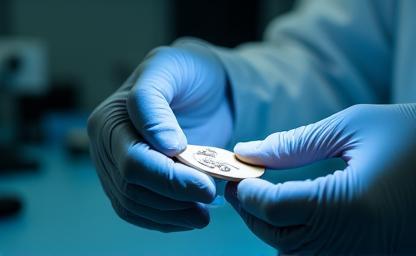Unveiling Our Latest Masterpiece
Experience unparalleled detail and craftsmanship with our exciting new figure launch. Prepare to be captivated by the Crimson Samurai.
Discover the New FigureAbout Mirai Koubou Co., Ltd.
For over 25 years, Mirai Koubou has been at the forefront of collectible figure manufacturing in Japan, nestled in the vibrant heart of Akihabara, Tokyo – a district synonymous with anime, manga, and pop culture. Our company was founded on a deep passion for bringing beloved characters from popular media into the physical world with exceptional accuracy and artistic integrity. We believe that a figure is more than just a static object; it is a tangible representation of a cherished story or character.
Our dedication to this craft is reflected in every stage of production. From the initial spark of inspiration and conceptual design, through meticulous digital sculpting and traditional modeling, to the final delicate painting and assembly, our team pours expertise and passion into creating collectibles that truly resonate with fans and discerning collectors worldwide. We understand the nuances that make a character feel alive, capturing dynamic poses, subtle expressions, and intricate costume details.

Our modern facility is equipped with state-of-the-art precision injection molding machinery, allowing us to produce parts with incredible accuracy and consistency, ensuring that each figure from a production run matches the approved prototype flawlessly. However, technology alone isn't enough. The soul of our figures comes from the hands of our highly skilled craftsmen and artists.
Our master sculptors and painters possess years of experience, employing traditional techniques alongside modern digital tools to achieve stunning results. They meticulously work on prototypes, fine-tune molds, and apply paint with an artist's touch, creating gradients, shading, and textures that elevate each piece to a work of art. We work in close collaboration with leading anime, game, and entertainment companies globally, acting as trusted partners to translate their valuable intellectual properties into high-quality, coveted collectibles that stand the test of time and proudly grace collections around the globe.

Introducing: The "Crimson Samurai" Figure

Crafted with an unwavering commitment to detail and a deep respect for the source material, the "Crimson Samurai" figure brings the beloved character Kenjiro to life like never before. Based on the iconic design from the critically acclaimed anime series, "Legend of the Whispering Steel," this figure captures every nuance of Kenjiro's powerful presence and tragic past, from the intricate folds of his battle-worn crimson kimono to the determined glint in his eyes.
Our team has worked tirelessly to ensure that this figure is a faithful and breathtaking representation, designed to be the centerpiece of any collection. We've utilized advanced scanning and sculpting techniques combined with traditional hand-finishing to achieve a level of realism and dynamic energy that truly honors the spirit of the character and his epic journey.

Key Features:
- Highly detailed sculpt meticulously capturing Kenjiro's stoic expression and powerful physique.
- Precision injection molding ensures sharp edges and incredible texture fidelity, especially on armor and fabric.
- Expert hand-painting applied with subtle shading techniques to enhance depth and realism on his crimson attire.
- Dynamic, mid-action pose evoking a scene from a pivotal battle in "Legend of the Whispering Steel".
- Figure stands on a custom themed base resembling cracked earth and scattered petals.
- Made with high-quality, durable PVC and ABS materials built to last.
- Interchangeable parts possibility (check final product specifications for confirmation).

Specifications:
- Scale: 1/7
- Height: Approx. 26cm (including base)
- Material: PVC, ABS
- Sculptor: Sato Kenichi
- Painter: Suzuki Yumi
- Release Date: Q4 2024
- Recommended Age: 15+
Crafting Excellence: Our Process
Bringing a figure from abstract concept to a tangible, collectible masterpiece is a meticulous journey at Mirai Koubou. Our integrated process is a fusion of cutting-edge technology and traditional craftsmanship, ensuring that every stage, from initial digital sculpting to final packaging, meets our exacting standards for quality and fidelity.

Concept & Digital Sculpting
The journey begins with translating 2D character designs and illustrations into highly detailed, production-ready 3D models. Our skilled digital sculptors work closely with licensors to capture the character's likeness, pose, and intricate details with absolute precision, preparing the model for physical prototyping and mold creation.

Prototyping & Molding
Physical prototypes are generated from the approved 3D data using advanced 3D printing or traditional sculpting. These prototypes are refined by hand until perfection is achieved. Highly durable, precision-engineered steel injection molds are then developed from these prototypes, crucial for mass production accuracy.

Injection Molding
Utilizing our state-of-the-art injection molding machines, high-grade PVC and ABS plastics are injected into the precision molds under high pressure. This process produces figure parts with incredible accuracy, consistency, and the structural integrity required for delicate details.

Painting & Assembly
After molding, parts are prepared for painting. Our expert painters use airbrushes and fine brushes for detailed work, applying layers of paint, shading, and washes to bring the character to life. Parts are then carefully assembled by hand by our skilled team, often requiring specialized techniques for complex figures.

Quality Control
Rigorous inspection is performed at multiple stages throughout the process – after molding, after painting, and after assembly. Each figure is checked for flawless finish, precise color application, structural integrity, and adherence to the approved prototype, ensuring only the best reach collectors.

Packaging & Logistics
Once figures pass final quality control, they are carefully placed into protective packaging designed to showcase the product while ensuring it arrives safely. Our logistics team then handles shipping, coordinating distribution to partners and collectors worldwide.
Our Unwavering Commitment to Quality
Quality is not just a step in our process; it is the cornerstone of every Mirai Koubou figure we produce. Our comprehensive quality control system is integrated throughout the production lifecycle, from the moment raw materials arrive at our facility to the final inspection before a figure is boxed. We believe that exceptional quality is what elevates a collectible from a toy to a cherished piece of art.

Material Excellence
We use only the highest grade PVC, ABS, and other specialized materials sourced from trusted suppliers. These materials are selected not only for their durability and structural properties but also for their ability to hold intricate detail and accept paint finishes flawlessly, ensuring longevity and a premium feel for each figure.
Precision Inspection
Every single piece, from the smallest accessory to the main body parts, undergoes multiple rigorous inspection points. Our trained inspectors examine each component under optimal lighting conditions, checking for molding imperfections, seam lines, paint defects, color inconsistencies, and structural integrity issues before moving to the next stage.
Color Accuracy
Faithfulness to the original character design's color palette is paramount. We employ strict color matching protocols using standardized color references and specialized equipment to ensure that the painted figure precisely replicates the intended colors from the source material, bringing characters to life accurately.
Showcase: Precision Crafted Figures
Explore a selection of figures we've had the privilege to produce, demonstrating the range and quality of our work across various licenses and styles. These examples highlight our capability to capture intricate details, dynamic poses, and vibrant finishes that collectors demand.








Ready to Own This Masterpiece?
Don't miss your chance to add the spectacular Crimson Samurai figure to your collection. Secure your piece of collectible history by pre-ordering today. Limited quantities are available for the first production run, making this a truly special release.
Pre-Order the FigureGet in Touch with Mirai Koubou
Contact Information
Mirai Koubou Co., Ltd.
Akihabara DM Building, 5th Floor
2-5-1 Kanda-Sakumacho
Chiyoda-ku, Tokyo, 101-0025 Japan
Phone: +81 3-5784-6100
Email: " aria-label="Send an email to Mirai Koubou">info@miraikoubou.co.jp
Business Hours: Mon-Fri: 9 AM - 6 PM JST (Closed on weekends and national holidays)